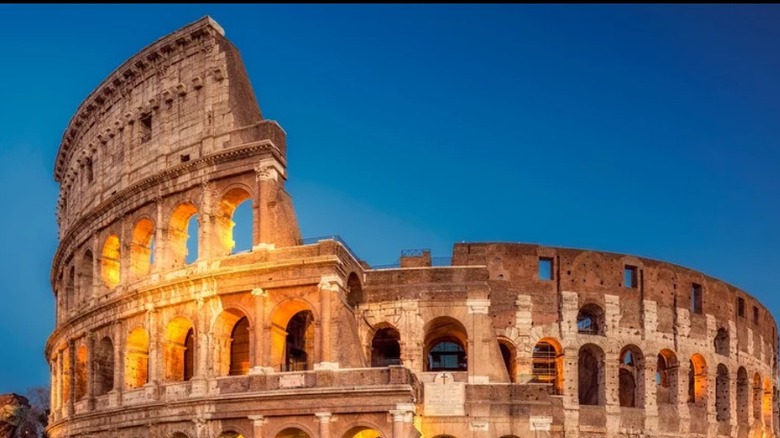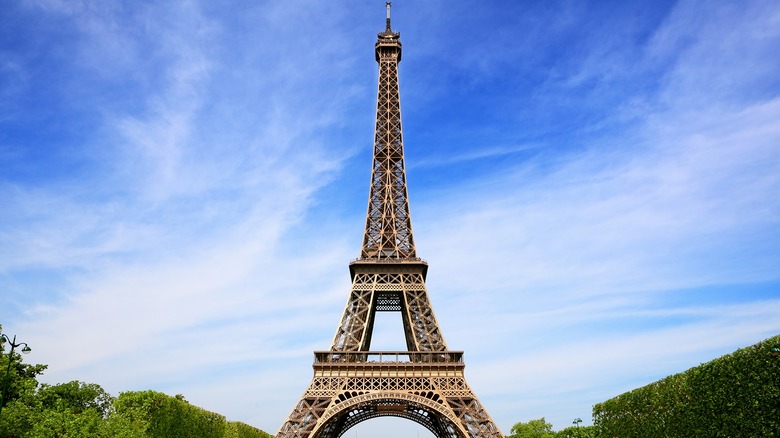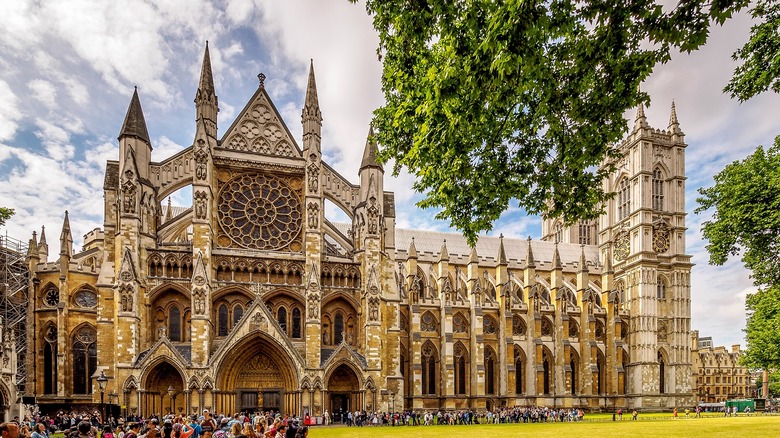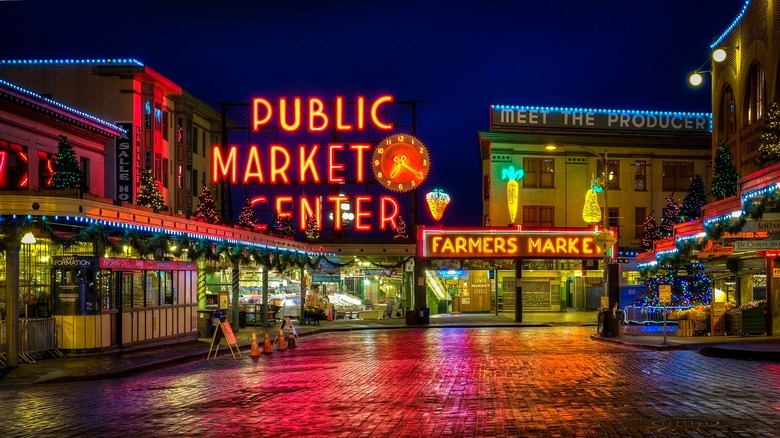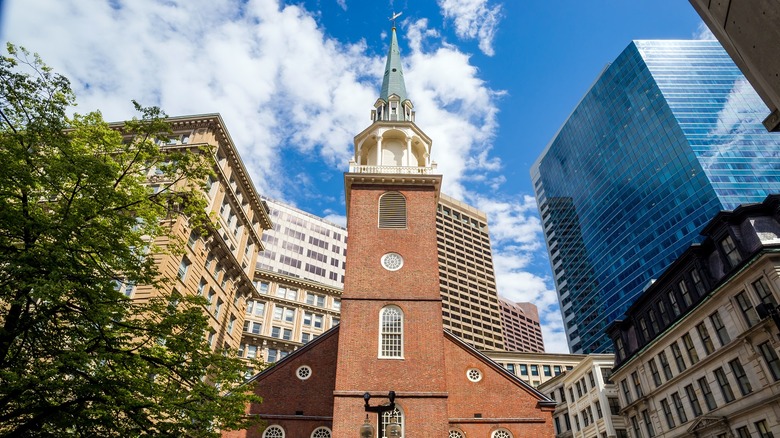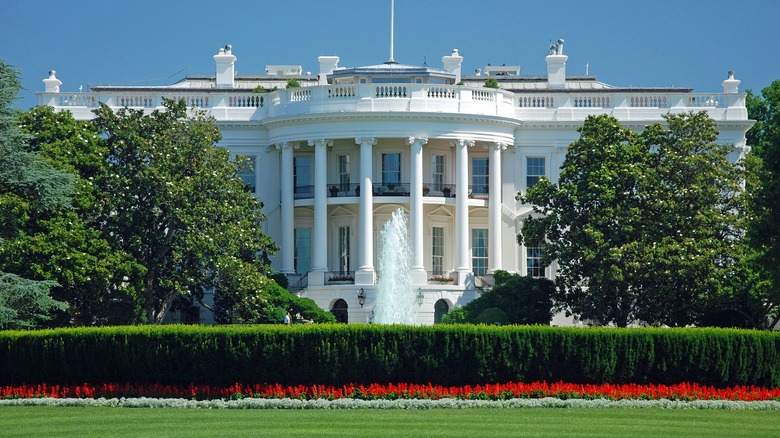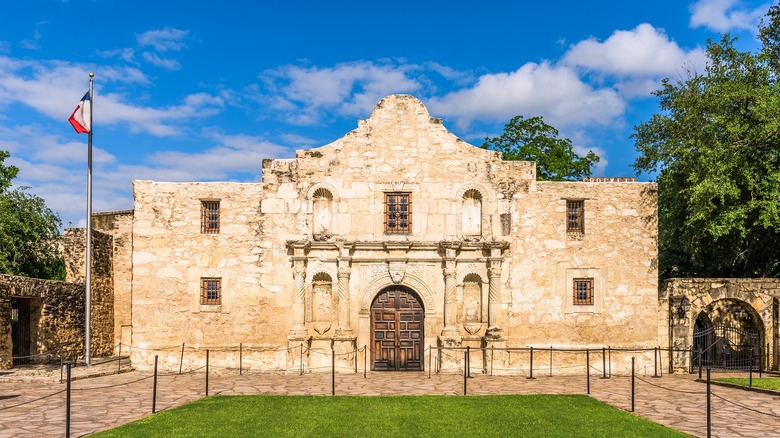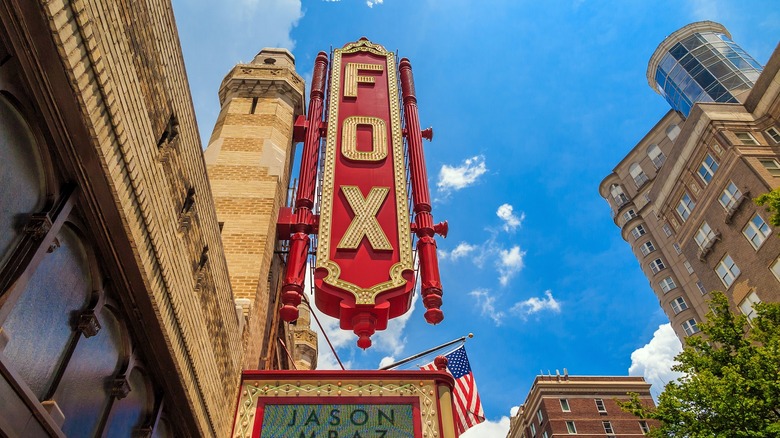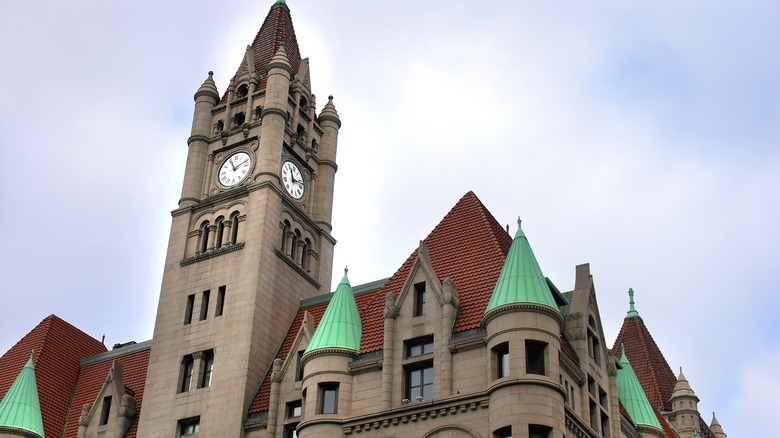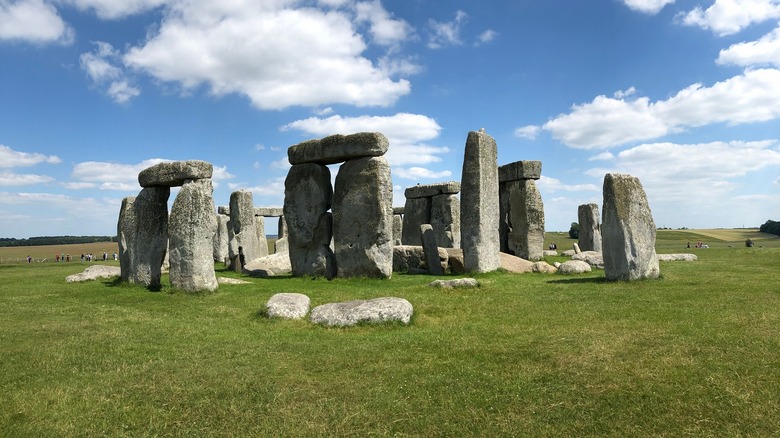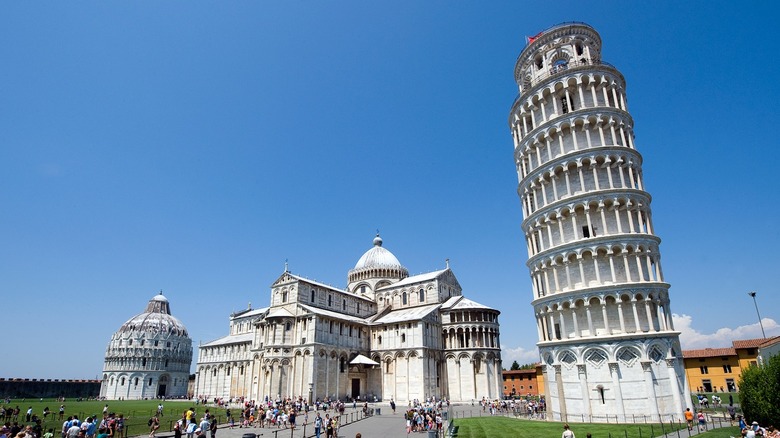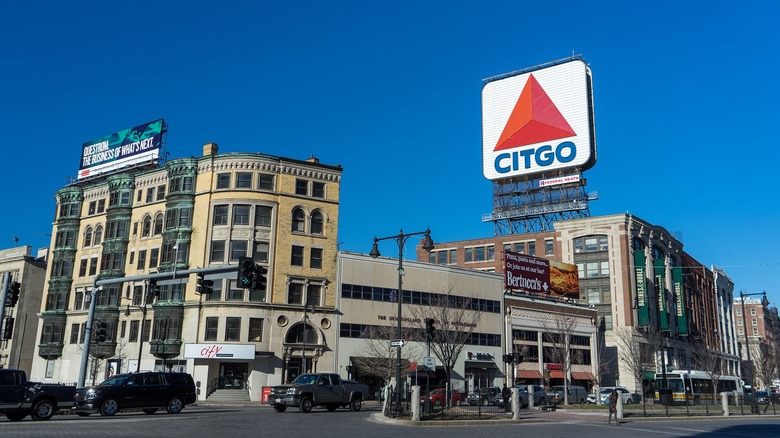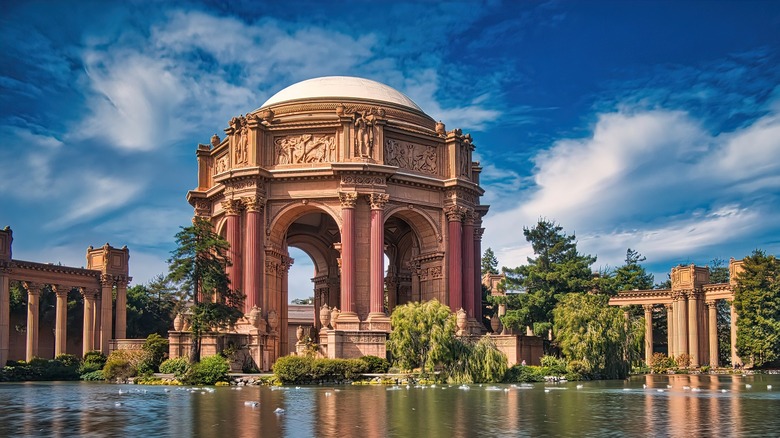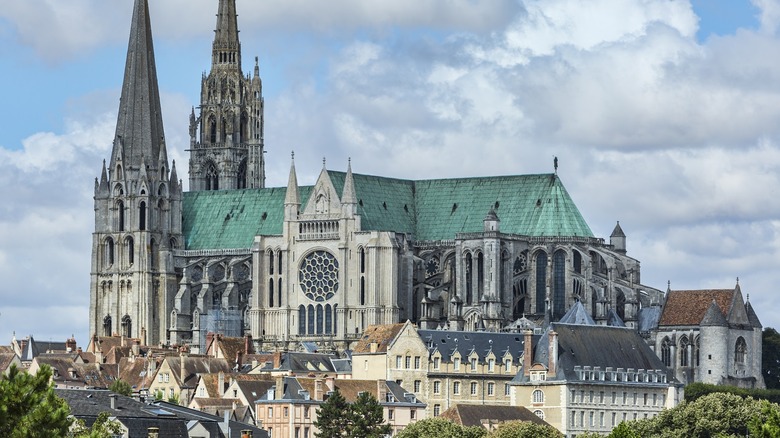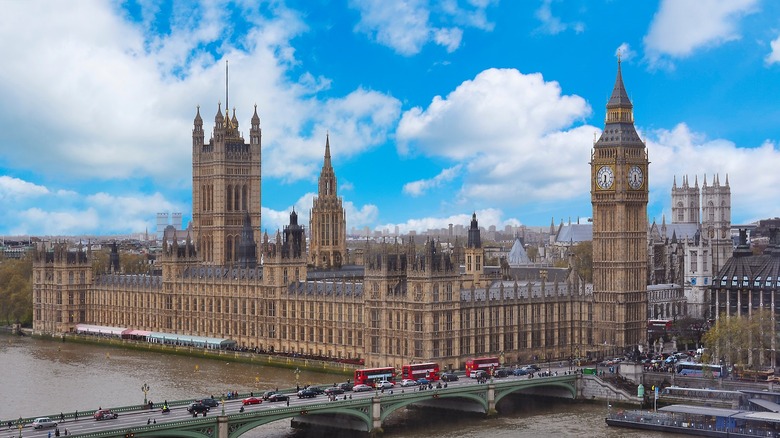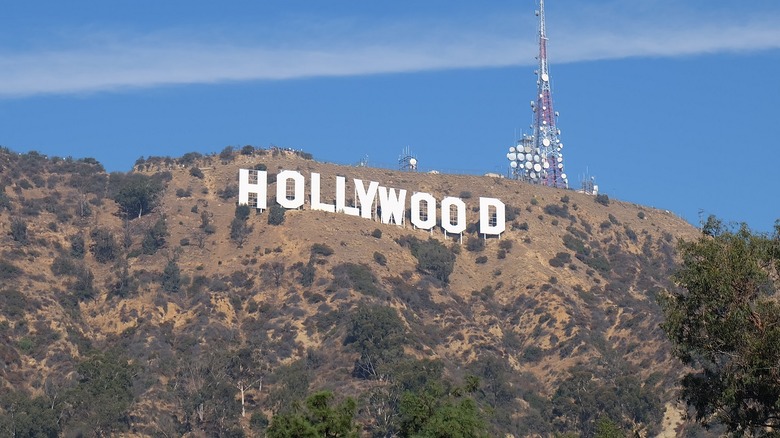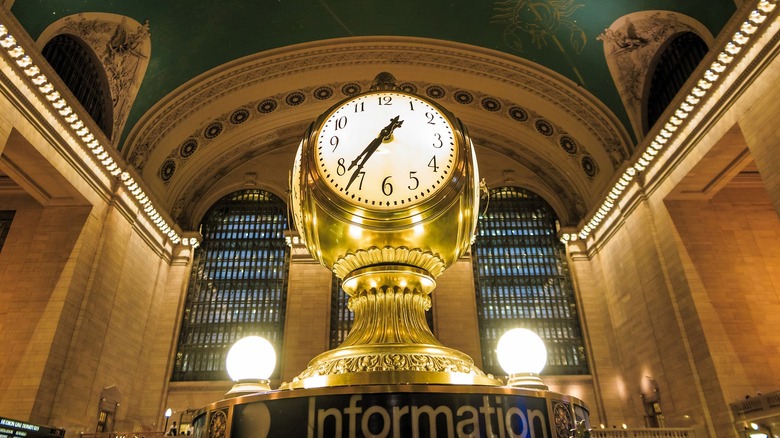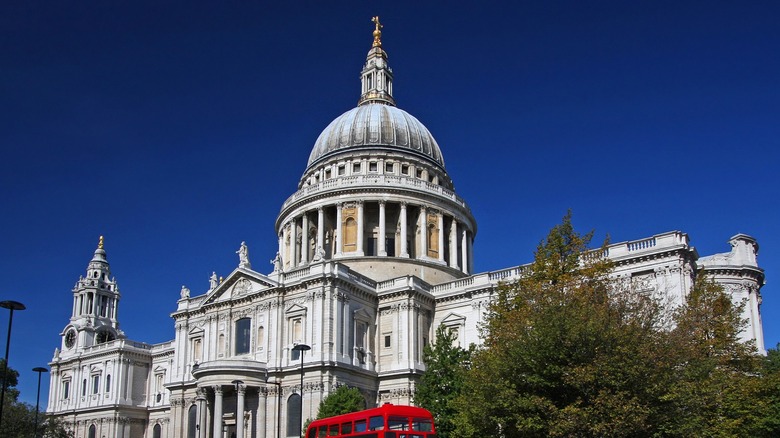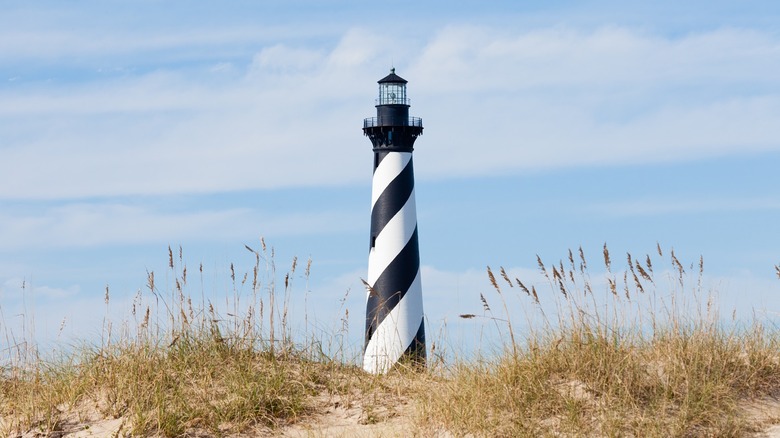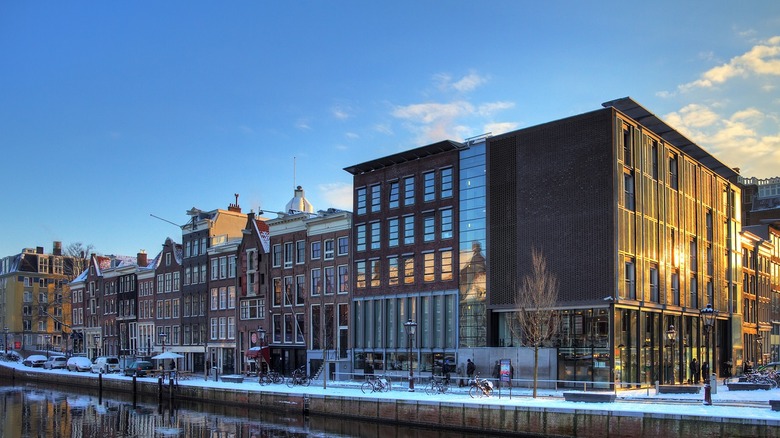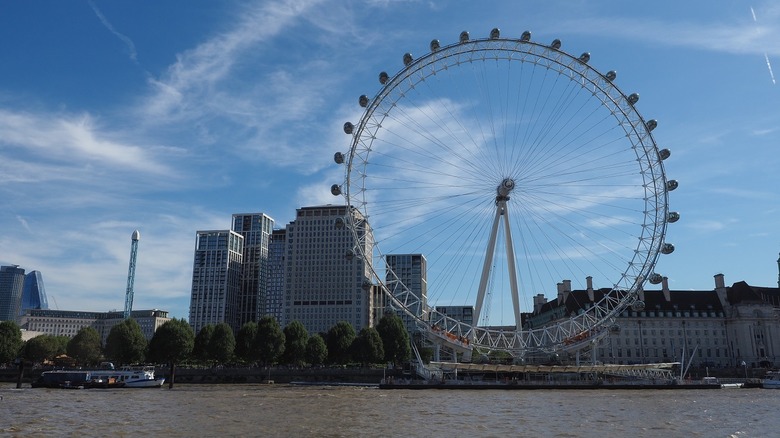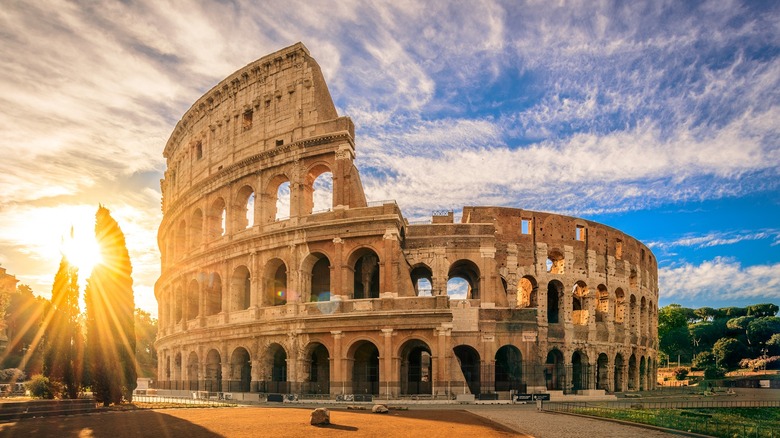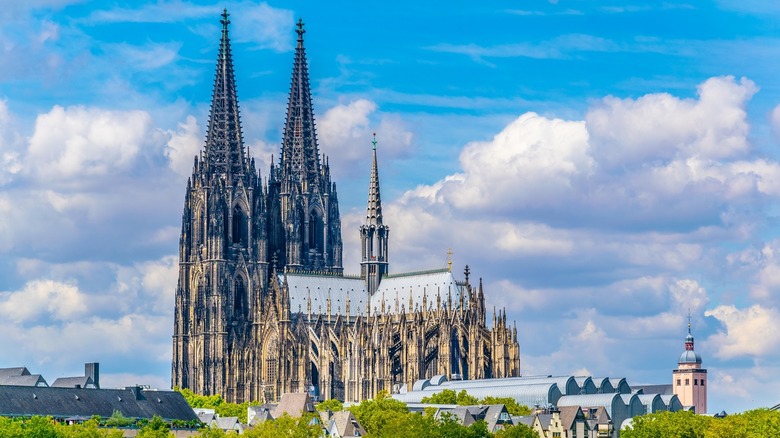Famous Landmarks That Were Almost Demolished
Try to imagine Paris without its famous Eiffel Tower, London without the vaunted Westminster Abbey or San Antonio without the historic Alamo. Though it seems hard to believe, these iconic landmarks — and many more — almost didn't make it. Over the years, war, fire, crazy weather and human decisions threatened many treasured places, from the globally famous to the locally cherished. Here's a look at places we're thankful still exist.
Eiffel Tower (Paris, France)
Paris' spectacular Eiffel Tower is a symbol of romance and climbing to its peak is one of those travel cliches, but still totally worth seeking out. Yet the swooping tower, built for the 1889 Exposition Universelle, was never meant to become a permanent part of Paris' skyline. It was supposed to be taken down after 20 years, but was saved thanks to its use in scientific experiments, especially early radio transmissions.
Westminster Abbey (London, England)
Westminster Abbey has been home to royal weddings and coronations for centuries. But the breathtaking British landmark suffered numerous air raids during World War II — and one was nearly deadly. In May 1941, a fire caused by German bombs produced 40-foot flames. Luck was on the Abbey's side, however, as the burning timbers ended up falling into an open area where they could be extinguished, and the proud building survived the war and stands strong as one of the European landmarks you need to visit.
Pike Place Market (Seattle, Washington)
Seattle tourists and locals love Pike Place Market, the city's massive waterfront public market. Today, it's one of the most popular tourist spots in America, but in 1963, the city's mayor and others backed a plan to replace the charming shops with skyscrapers. A group called Friends of the Market formed to fight the change and gathered 53,000 voter signatures throughout the decade to show their opposition. And in 1971, Seattle voters approved an initiative to keep their precious market alive and selling. Today, it's a preserved historic district.
Old South Meeting House (Boston, Massachusetts)
Boston is chock full of landmarks, including the historic Old South Meeting House, where colonists planned the Boston Tea Party in 1773. But the building later faced its own struggles. It survived the Great Boston Fire of 1872, but was auctioned off in 1876 for just $1,350 — simply for the value of its materials, like copper. A group of concerned citizens enlisted the likes of Louisa May Alcott and Ralph Waldo Emerson to help save this historic site, and raised over $400,000 to purchase the building. It reopened in 1877 as one of the nation's first American history museums and remains one of the spots every American history buff needs to see in their lifetime.
The White House (Washington, DC)
The White House in Washington, D.C. has been home to every U.S. president since John Adams in 1800. But in 1814, it was set afire by British troops and burned almost to the ground. It's said that first lady Dolley Madison remained calm and directed the safe removal of many valuable objects, including a 1797 portrait of George Washington. The White House was rebuilt and remains a favorite D.C. tourist attraction and one of the 50 places you need to see in your lifetime.
The Alamo (San Antonio, Texas)
San Antonio, Texas, is a seriously underrated American city, and it's hard to envision it without the historic Alamo, site of the 1836 Battle of the Alamo. But things didn't look so positive in 1903, when the owner of the Alamo's Long Barrack started talking about selling it to make way for a hotel. Area schoolteacher Adina de Zavala got involved, and the Texas Legislature ended up purchasing the buildings, saving a vital bit of Texas history.
Fox Theatre (Atlanta, Georgia)
Atlanta's Fox Theatre was inspired by Eastern temples and features domes, minarets, archways and gold-leaf interior details. But by 1974, times were changing, residents were moving out to the suburbs and the Fox closed its doors. Thankfully, dedicated Atlantans started a "Save the Fox" campaign, raising $3 million to reopen the theater in 1975. It now operates as a multipurpose performing arts center and is a must-see spot in Atlanta, one of the best weekend getaways in America.
Landmark Center (St. Paul, Minnesota)
Minnesota's capital city, St. Paul, boasts a historic castle of sorts. The soaring, turreted Landmark Center was once the city's federal courthouse and main post office. But in the mid-20th century, the building was vacated and listed for demolition. Thankfully, in 1972, a group of interested citizens saved and restored the building, which was later placed on the National Register of Historic Places and is now a cultural center.
Stonehenge (Wiltshire, England)
Stonehenge is one of the most mysterious places in the world and attracts millions of tourists who ponder the meaning of its ring of standing stones. But back in 1915, Stonehenge was a neglected ruin, with some people even scratching their names into its rocks. The whole monument went up for auction and was bought by Cecil Chubb, an Englishman who reportedly had gone to the auction to buy a set of dining room chairs. Three years after buying it, Chubb donated it to the nation, and a series of restorations have preserved it for generations.
Leaning Tower of Pisa (Pisa, Italy)
Whether you are in Italy for the famous pizza or the sights, the Leaning Tower of Pisa is something to behold. It was built in 1173, and even back then, its construction was stopped numerous times by war, debts and as builders worked to correct the bell tower's now-famous lean. The slant comes from the tower's foundation being laid on soft ground, but it wasn't the only threat to the iconic building's survival. During World War II, the U.S. Army believed the Germans were using the nearly 200-foot-tall building as an observation post and came close to blowing it up with artillery. Sergeant Leon Weckstein took on the perilous job of watching for German activity in the tower and saw none. The tower lived to lean another day.
Citgo sign (Boston, Massachusetts)
One of the quirkiest American landmarks is the Citgo sign in Boston, located in the city's Kenmore Square since 1965. But in the 1980s, demolition crews had already hoisted their equipment to the roof of the sign's building, ready to start wrecking. Officials stopped the destruction, and the sign stands high today.
Palace of Fine Arts (San Francisco, California)
The Golden Gate Bridge may be San Francisco's most famous landmark, but the impressive, elegant Palace of Fine Arts is right up there. This venue is one of only a few structures still standing from the 1915 Panama-Pacific International Exposition. The palace was meant to come down when the fair was over, but it was so beloved that even while the event was in progress, a group was formed to save it. Then, in 1952, Mayor Elmer Robinson said it was better to tear down the building rather than spend millions to fix it. Thankfully, through the state of California and private donations, a restoration project led to a 1967 reopening, and the palace still stands today.
Chartres Cathedral (Chartres, France)
There are many beautiful, abandoned churches around the world, but the Chartres Cathedral in Chartres, France, is not one of them. In fact, it's among the best preserved European gothic cathedrals. During World War II, the U.S. Army heard that the Germans were occupying the cathedral and using it for observation. It was set to be destroyed, but American Col. Welborn Barton Griffith Jr. volunteered to go behind enemy lines and scout out the cathedral. He found no Germans, and the church was saved. Sadly, Griffith died in battle later that day, but his scoping of the cathedral is mentioned in the citation given with his Distinguished Service Cross, awarded posthumously.
The Palace of Westminster (London, England)
The heart of the United Kingdom's government is the Palace of Westminster in London, where the two houses of parliament, the House of Commons and the House of Lords, meet. The palace has suffered numerous fires in its history, but the worst came in 1834, when two stoves ignited paneling in the Lords' chamber, destroying numerous buildings and resulting in one of the largest fires London has ever seen. Rebuilding began in 1840, though it took 30 years to complete.
Kyoto, Japan
Many cities in Japan, including Tokyo, suffered large-scale destruction during World War II. Kyoto was spared. U.S. Secretary of War Henry L. Stimson had traveled to the city and had it taken off the list of possible atomic bomb targets. The city's elegant older buildings and forests remain among the most mesmerizing places on Earth.
Hollywood Sign (Los Angeles, California)
The famous Hollywood Sign is a favorite photograph of tourists and one of those famous movie locations you can actually see in real life. The sign originally marked a real estate development called Hollywoodland. But by the 1930s, the sign was crumbling and the city's Recreation and Parks Commission advocated tearing it down, but locals fought the change, the "land" was removed and the sign was refurbished. It's struggled from time to time since then. In 1978, it briefly came down while a new core was built and new letters assembled. But now the 240-ton sign stands again as an impressive marker of the main street of movies.
Grand Central Terminal (New York City, New York)
New York City's Grand Central Terminal has been threatened by a wrecking ball more than once. In the 1950s, architect I.M. Pei designed a building called the Hyperboloid, which would have replaced the terminal. That didn't pan out, but in the late 1960s and early '70s, the company that owned the terminal wanted to demolish parts of it and cover up other sections with a 55-story building. Friends of the terminal, including Jacqueline Onassis, managed to prevent the change, and the station eventually underwent a multi-million-dollar renovation, though the results of decades of neglect can still be seen. Today, Grand Central Terminal, with its numerous trains and beautiful dome ceiling, is one of the most popular tourist spots in America.
St. Paul's Cathedral (London, England)
Diana Spencer famously wed Prince Charles in London's St. Paul's Cathedral in 1981. But 41 years earlier, that breathtaking and historic wedding site faced a brush with destruction. A 4,400-pound unexploded German bomb lodged in the street outside the church, perilously close to a gas main. Had it gone off, the cathedral would have been massively damaged. For three days, a bomb squad worked to carefully dig out the bomb, finally removing it to be exploded in a secure location.
Cape Hatteras Light Station (Buxton, North Carolina)
Cape Hatteras Light is a striking, striped lighthouse in the beautiful coastal town of Cape Hatteras, North Carolina. But the very sea that gives it life has also threatened it numerous times due to beach erosion. Think you can't just pick up and move a lighthouse? In 1999, that's exactly what happened — with the sea encroaching, the lighthouse was moved 2,900 feet and now sits 1,500 feet from the seashore. The National Park Service claims it should enjoy a century of safety in its current location.
Anne Frank House (Amsterdam, Netherlands)
If you're traveling to Amsterdam you may want to take a somber visit to the Anne Frank House. Anne Frank and her family hid from the Nazis for two years in the secret annex of Otto Frank's businesses, Opekta and Pectacon. Her father, Otto Frank, was the only one of the group to survive World War II, and in 1954, reluctantly sold the building to a textile company that planned to demolish it. Prominent Amsterdam citizens protested, and the company eventually donated the building for preservation. Today, it stands as a museum meant to preserve the annex.
London Eye (London, England)
London is one of the most romantic cities in the world, and if you want one of the best views of the city, you should take a trip on the London Eye. The famed attraction was meant to celebrate the new millennium and made its first revolution on Dec. 31, 1999. The wheel was supposed to stand in its spot next to the River Thames for only five years before being dismantled and moved somewhere else. But the wheel became so popular that its five-year lease was extended. It's now an integral part of the London skyline.
Colosseum (Rome, Italy)
Rome is one of the 50 places you need to visit before you turn 50, and no trip to this Italian city is complete without seeing the stunning historic Colosseum. But nature has often seemed to have it in for the Colosseum. One of the most serious disasters occured in 1349, when a major earthquake hit Rome. Another quake in 2016 added more cracks and worried building experts, but the Colosseum still stands.
Cologne Cathedral (Cologne, Germany)
One of Germany's most famous landmarks, the Cologne Cathedral, features two stunning, soaring towers. Building began in 1248 and took over 600 years. The church was originally built to house religious relics. The twin spires were hit by bombers during WWII. The cathedral was damaged but miraculously survived. Today, the double towers still dominate the skyline of Cologne, unlike these gorgeous buildings that were lost to time.
